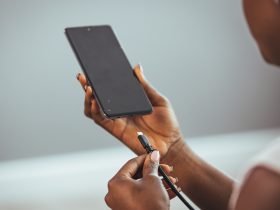Smartphones are now an indispensable companion for many of us, and we couldn’t imagine life without them. They allow us to do so much: From chatting with others to storing our important information — plus they’re the center of our entertainment world. In addition, we keep a whole bunch of personal data, photos, videos, messages, and app configs on them. Every smartphone is as unique as its owner. That makes it all the more important to back up your device regularly so this data is protected should the worst happen. Read on to learn how to back up your iPhone and what options are available to do that. Also learn how Avira Mobile Security can also make your iPhone more secure.
How can I back up data on my iPhone?
Basically, there are two official ways to back up the data on your iPhone. Apple offers you the option to use iCloud if you want to go down the cloud route or Finder or iTunes if you prefer a local backup.
iCloud is Apple’s own, internet-based cloud service. The advantage of this method: You upload all your data directly from your iPhone or iPad to Apple’s cloud. All you need is your smartphone and a stable internet connection.
The alternative to iCloud is the computer program Finder (for Mac) and iTunes (for Windows). Here, you use a cable or Wi-Fi to back up your iPhone to a computer.
Wireless iPhone data backup — thanks to iCloud
iCloud is an extremely convenient and intuitive way of backing up your iPhone’s data. It allows you to back up all your files, messages, and app configurations in the cloud in just a few steps.
iCloud is (as the name suggests) Apple’s official cloud solution for its customers. A cloud is an IT resource that functions as a data storage facility in addition to providing cloud computing and other services. You can only access the cloud via a direct internet connection. The big advantage of a cloud is that data can be stored and accessed regardless of the device. This means you can access your data whenever you want — even from another iPhone. All you need is access to your Apple ID. This is your personal user account that you need to set up once for your Apple devices.
Tip: Check out our article on protecting your data in the cloud to learn how you can increase cloud security and improve the protection of your sensitive data and documents.
How Apple’s iCloud works
Apple’s iCloud service offers wireless, device-independent data backups without you needing to use the two official Apple tools Finder and iTunes. All you need is your iPhone and access to the internet.
Essentially, iCloud has two core functions. The service can sync files in real time and create a complete iPhone backup.
- Syncing: All the data on your iPhone that’s updated regularly is synced automatically with the cloud. This includes iCloud photos, all files on iCloud Drive, and your personal notes. As soon as you change a file in any way, this updated version is synced automatically with iCloud. This means you have direct, immediate access to the latest version of all your documents and files on any device at any time.
- Backup: During backup, no individual files are synced with iCloud in real time. Instead, a complete backup of your device is uploaded. This means that data that’s not regularly used, updated, or synced is also uploaded. Think of the backup as a snapshot of your iPhone at a specific moment in time.
Important: Update your iPhone at regular intervals to keep all services up to date and to close any security holes right away.
What does an iPhone backup include?
When you create an iPhone backup, a virtual copy of the exact device state that you find on your smartphone at that precise moment in time is uploaded to the cloud. This means that an exact copy of all your data, files, apps, and custom configurations is transferred to the cloud — any changes you make following this backup won’t be included. This means that each backup is simply a snapshot of the exact point in time at which you created and uploaded it to iCloud.
The iCloud backup includes:
- All photos, videos, messages, and apps
- Device settings as well as layout and app configurations
- All your data and configurations related to Apple Watch
- All purchased content, such as wallpapers and ringtones
How to create a manual iPhone backup with iCloud
You can back up your iPhone backup quickly and easily using iCloud. Just follow these simple steps:
- Preparation: Connect your iPhone to a Wi-Fi network and make sure the battery is sufficiently charged.
- Back up your iPhone: On your iPhone, go to Settings > [your name] > iCloud > iCloud Backup and select the option Back Up Now.
This way, you can create a complete iPhone backup at any time in just a few seconds.
Tip: With the latest 5G iPhones, you can back up your device over your cellular network. You can turn this option on/off in the iCloud Backup menu under Back Up Over Mobile Data.
How to set up automatic iCloud backups
Prefer to take the hassle out of remembering to back up your iPhone? Simply enable the auto-backup feature to have your iPhone backed up at regular intervals. To do this, once again go to Settings > [Your Name] > iCloud > iCloud Backup and turn on the option Back Up This iPhone. Your iPhone will now create a daily backup whenever it’s plugged in, locked, and connected to Wi-Fi. In other words, whenever you charge your iPhone and are not actively using it, your device automatically creates a backup.
This way you can ensure you have regular backups and a current image of your iPhone in iCloud.
How much storage space does iCloud offer?
Unlike when you sync specific files, with backups you can’t choose which data or files to include or store them on another device. The backup is always a snapshot comprising a complete package that includes everything on your iPhone. Apple also offers “only” 5 GB of storage space with iCloud — if you need more storage, you’ll have to pay according to how much you want. At first glance, although 5 GB of storage space sounds like a lot, you’ll eat into it quickly — especially with high-resolution images and videos.
Before backing up, check how much storage you currently have on your iPhone and add more space if needed.
Manage and delete iCloud backups
It’s quick and easy to delete older backups from iCloud if you’re running low on storage space and want to delete older backups from iCloud. Navigate again via Settings > [Your Name] > iCloud to Manage Account Storage. One tap on Backups shows you all the backups that are currently in your iCloud. You can tap any backup and choose Turn Off & Delete to permanently remove it. This allows you to keep things tidy and free up storage space.
Restoring your iPhone data from an iCloud backup
It’s also super simple and convenient if you not only want to backup your data regularly but also intend to transfer it to a new or reset device. Here’s how to restore your iPhone backup:
- Turn on your device: Turn on your iPhone and make sure it’s connected to a Wi-Fi network.
- Restore your backup: Go through the steps of setting up your iPhone. When prompted to select the Language & Region, tap Set Up Manually. Then select the option Restore from iCloud Backup and follow the intuitive instructions up to the point Restore Backup.
- Log in to iCloud: During setup, your iPhone will ask you to log in to iCloud with your Apple ID. Make sure you log in with the same Apple ID you used to initially create the backup.
- Restart your device: After the backup data has been loaded from iCloud, unpacked, and installed, you can restart your device. Your iPhone is now in exactly the same state as you left it at the time of the backup.
Backing up your iPhone on a Windows computer (iTunes)
As an alternative to backing up via iCloud, you can also save a backup of your iPhone on your computer. All you need to backup iPhone on your Windows computer is
- Your iPhone
- A connecting cable
- iTunes on your computer
Alternatively, you can also sync the data wirelessly with iTunes over a Wi-Fi network.
To do this, simply open iTunes on your Windows computer and click the menu item iPhone. Then go to Summary > Backups and select Back Up Now.
Backing up your iPhone on a Mac (Finder)
If you have a Mac running macOS 10.15 or later, use Finder to back up your iPhone. To do this, use a USB cable (or Wi-Fi) to connect your iPhone to your Mac. Open Finder and then select your iPhone in the sidebar. Then go to General > Back up all of the data on your iPhone to this Mac > Back Up Now.
Tip: If you also want to encrypt your data, that’s easy to do. Simply select the Encrypt local backup option in the same menu window.
Change the backup storage location in Finder/iTunes
The big advantage of a local backup is that you don’t have to buy storage space — you only need to have enough space on your computer. Nowadays, most computers should come with significantly more than 5 GB of storage space anyway.
If you ever run out of storage space, you can also move your backup data to another internal or external hard drive. Since the backup folder is hidden by default, you’ll need to locate it. To do this, open Finder and select Go to Folder…. Enter the pathname ~/Library/Application Support/MobileSync/Backup and you’ll be able to view your backup files. From here, you can easily move any files to another location.
In iTunes on Windows devices, press the Windows + R key. In the Run window, enter %USERPROFILE%.
Backing up your iPhone in specific situations
Ideally, you’ll have full access to your device if you want to create an iPhone backup. However, you may not be able to use your device fully or at all. How can you back up your data in these circumstances? Don’t worry — we’ll show you how.
Backing up your iPhone if the display is broken
Broken your iPhone display and can only see a black screen? In this case, you’ll need to use Finder or iTunes with your iPhone connected to your computer using a USB cable. First connect your device to your computer as described above and create a local iPhone backup.
If your display still works but cannot be operated via the touch function, you can use a combination of voice control plus a USB keyboard. Connect your iPhone to a USB keyboard (you’ll need a Lightning to USB adapter) and say Hey Siri. Ask Siri to turn on VoiceOver. You’ll now be able to navigate your iPhone without needing to use the screen as everything is read aloud. Now go to the iCloud settings and navigate through the iCloud menu using the USB keyboard. Using CTRL + ALT + Space (Windows) or CTRL + Option + Space (Mac), you can turn on the backup options. Repeat this key combination until you see the option Back Up Now. This now allows you to save your data to iCloud and restore it later if needed.
Important: If your iPhone has been connected to your PC for a while (or never), your device will ask you to trust the connection to the computer. However, you won’t be able to do this if the display is broken. Your best bet in this case is to reconnect your iPhone to the computer at regular intervals.
Backing up your iPhone without access to you actual phone
Want to sync and back up your data but don’t have access to your iPhone? If your device no longer works and you can no longer switch it on, only Apple support can help. Contact the customer service team to see what your options are.
Protect your data and privacy with Avira Mobile Security for iOS
Regular backups help you prevent unwanted data loss. You can easily back up your iPhone using iCloud and the Finder/iTunes apps. If you want to better protect your smartphone and especially your data even when on the go, we recommend our free protection for your iPhone.
With Avira Mobile Security for iOS, you can protect all the data you send and receive over public Wi-Fi networks and conceal your identity using the integrated VPN. Additionally, the app helps you find all the smart devices on your home network and prevents Siri from recording your conversations.














